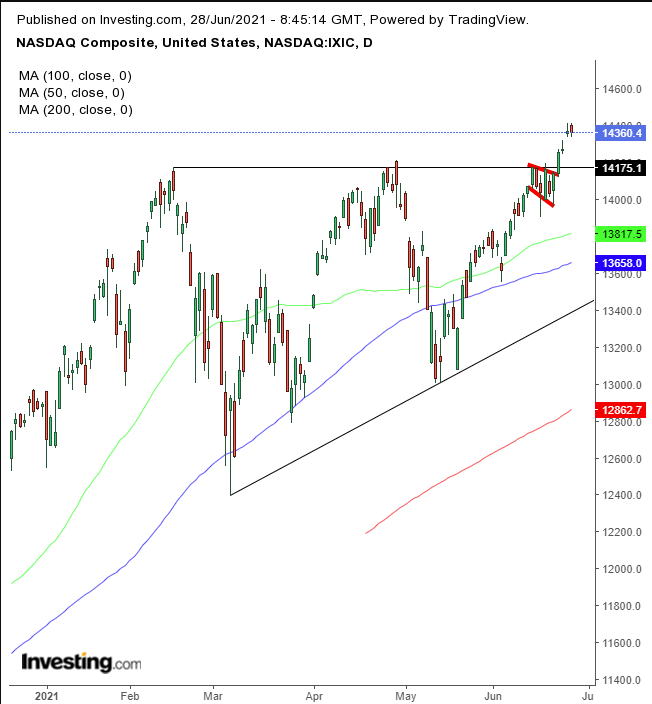The VIX, often referred to as the market's 'fear gauge,' is hovering at pre-pandemic level lows, yields are falling, and investors are focused on a V-shaped economic recovery as they await this Friday's key nonfarm payrolls report among other economic releases this week.
Yesterday, in our Week Ahead post, we demonstrated how last week's trading turned the Reflation Trade back into the leader of the market rally. However, based on the outlook for the NASDAQ Composite, we're now thinking perhaps growth stocks are about to come back into vogue.
The Federal Reserve's ongoing flip-flops regarding the timing and path to tightening will likely make investors trust that source less. Instead, economic data could become a market driver this week, ahead of the monthly US employment figures. As well, the Delta variant of the coronavirus, which is highly contagious, has caused the pandemic case count to accelerate in Asia and elsewhere, increasing the risk of lockdowns around the globe.
This mix of catalysts could turn the equity rotation away from value shares once again, as investors reverse back to what they see as the tried and true from last year’s lockdowns—namely, technology stocks.
That's reflected in today’s NASDAQ futures activity; the tech-heavy contracts are currently leading all US futures, with the Dow and Russell 2000 underperforming.
As well, on the technical charts, the NASDAQ Composite has the most bullish trading patterns among the major indices.

The NASDAQ recently completed two bullish patterns simultaneously—a Falling Flag, smack against the top of an Ascending Triangle, which the Flag helped complete.
The Flag’s implied target is 14,800, while the triangle’s implied target is nearing the 16,000 level. The Flag’s target can be expected to reach its goal within weeks, while the larger, triangle’s goal will be hit in about four months.
Trading Strategies
Conservative traders should wait for the price to retest the flag/triangle, demonstrating support.
Moderate traders would buy the dip.
Aggressive traders could enter a contrarian short position, after a two-day pause, in case there’s a return-move, before joining the rest of the market in a long position. While this position is risky, it provides an exceptional risk:reward ratio. Here’s an example.
Trade Sample – Aggressive, Contrarian Short Position
- Entry: 14,400
- Stop-Loss: 14,420
- Risk: 20 points
- Target: 14,200
- Reward: 200 points
- Risk:Reward Ratio: 1:10
